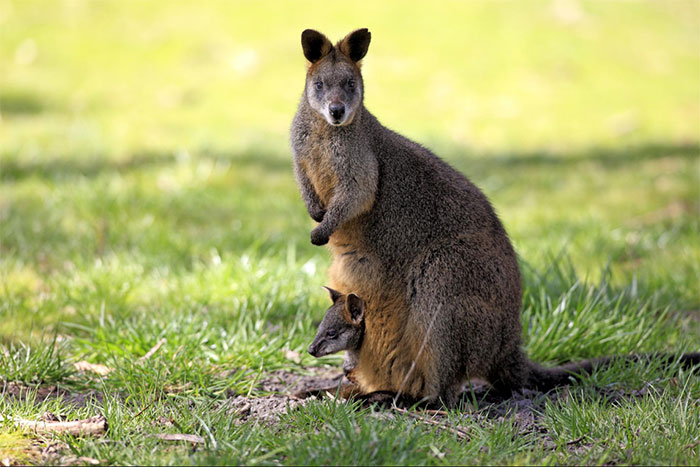The Wallaby kangaroo has 2 uteri, each with its own ovaries and cervix, allowing it to remain pregnant throughout adulthood. Even this species can only get pregnant 1 to 2 days before giving birth to another baby in the womb.
Most mammals around the world can become pregnant multiple times during adulthood. Most, however, have to take a break after each birth. For some species, each female can only have a few children in her life.
But the Wallaby kangaroo – the animal found in eastern Australia is different. According to the latest study published March 2 in the Proceedings of the National Academy of Sciences, the animal could even conceive a day or two ago when delivering another child in the womb.
“Like marsupies, wallaby kangaroos give birth to tiny babies,” said Brandon Menzies, co-author of the study and also a researcher at the University of Melbourne. These babies crawl to a special breastfeeding bag. Some species of marsupials, such as kangaroos, can mate and conceive about 1 day after birth. However, the wallaby kangaroo is a rare species in the world that can conceive one day before giving birth to another baby in the womb.
Wallaby kangaroos and European hares are the only animals in the world capable of conceiving a new baby while another is pregnant. However, the European hare has a distinct breeding season and does not become pregnant continuously through most of adulthood. Wallaby kangaroos can do this.
Researcher Brandon Menzies adds: “Re-conception during pregnancy is almost impossible for mammals. Most animals have only one uterus, and when an embryo develops, there is no room for another. However, Wallaby kangaroos have 2 uteri, each with their own ovaries and cervix, so re-conception during pregnancy is something they do easily.
According to researchers, the reproductive cycle of a female kangaroo wallaby is very continuous. They usually mate in January and February, 1 to 2 days before giving birth to a pregnant baby. The newborn will slip into the mother’s pocket for treatment. The newly fertilized embryo, also known as a blastocyst, is made up of around 80 to 100 cells that will remain in the uterus, without functioning.
During this time, the new baby will continue to be breastfed and grow. Around September, this “baby” will be ready to leave the mother’s pocket. This is also the time to coincide with spring in the southern hemisphere (Australia in the southern hemisphere) with lush green grass everywhere, good for the growth of young wallaby kangaroos.
By then, baby wallaby kangaroos will need less maternal care and will be weaned by December. The kangaroo Wallaby will now start working on the embryo in its womb and a new kangaroo a month later. Before giving birth, they fertilize a new embryo.
Researchers found a pattern of childbirth and pregnancy in female wallaby kangaroos when they followed them throughout the year. They found that the blastocyst of this species was inactive in 9 out of 10 after mating and also while they had young children who were breastfeeding in the womb.
Wallaby kangaroos are small kangaroos, similar in appearance to the kangaroo but smaller in size. They are native animals, present throughout Australia, especially in the east.


